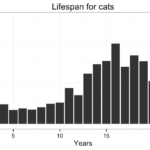Why Is My Dog Chewing His Tail
Why Is My Dog Chewing His Tail: Understanding the Causes and Solutions
If you’ve ever seen your dog chewing his tail, you know it can be both amusing and concerning. While some dogs may do it occasionally as a form of self-grooming or play, others may do it excessively to the point of injuring themselves. As a responsible pet owner, it’s important to understand why your dog is chewing his tail and what you can do to help him stop.
In this article, we’ll explore the possible causes of tail chewing in dogs, from medical to behavioral factors. We’ll also provide some practical tips on how to prevent and treat tail chewing in dogs, based on scientific research and expert advice. Whether you have a puppy or an adult dog, whether you own a small breed or a large breed, this article will give you insights into your furry friend’s behavior and health.
Causes of Tail Chewing in Dogs
Medical Causes
One of the most common reasons for tail chewing in dogs is medical issues that affect the skin, the nerves, or the glands around the tail area. Here are some examples:
1. Flea allergy dermatitis: This is a type of allergic reaction that occurs when a dog is bitten by fleas. The saliva of fleas contains proteins that can trigger an immune response in sensitive dogs, leading to itching, redness, and inflammation of the skin. Dogs with flea allergy dermatitis may scratch or chew their tail because it’s one of the areas where fleas tend to bite more often.
2. Anal gland problems: Dogs have two anal glands located on each side of their anus that secrete a smelly fluid used for marking territory and communication with other dogs. Sometimes these glands can become impacted or infected, causing pain, swelling, discharge, and odor. Dogs with anal gland problems may lick or bite their tail as a way to relieve discomfort or express frustration.
3. Skin infections or parasites: Dogs can develop various types of skin infections or infestations, such as bacterial, fungal, or parasitic ones. These conditions can cause itching, scabs, bumps, and hair loss on the tail and other parts of the body. Dogs with skin issues may chew their tail to scratch the itchy spots or remove the crusts.
4. Neurological disorders: Dogs can suffer from neurological problems that affect their ability to feel or control their tail movements. For example, spinal cord injuries, degenerative myelopathy, or disk herniation can lead to weakness, numbness, or pain in the hind limbs and tail. Dogs with neurological disorders may chew their tail because they don’t sense it properly or because they try to relieve pressure or tension.
Behavioral Causes
While medical causes of tail chewing are often treatable with medication or surgery, behavioral causes require a different approach. Behavioral causes refer to psychological factors that influence a dog’s behavior and emotions. Here are some examples:
1. Anxiety or stress: Dogs can experience anxiety or stress for many reasons, such as separation from their owner, loud noises, new environments, unfamiliar people or dogs, boredom, lack of exercise, or changes in routine. When dogs feel anxious or stressed, they may engage in repetitive behaviors like tail chasing or chewing as a way to self-soothe.
2. Boredom or lack of stimulation: Dogs need mental and physical stimulation to stay healthy and happy. When dogs don’t have enough opportunities to play, explore, learn, or socialize, they may resort to destructive behaviors like chewing furniture or tails as a way to relieve boredom.
3. Obsessive-compulsive disorder (OCD): Some dogs can develop OCD-like behaviors that involve repetitive actions without any apparent reason. For example, some dogs may chase their tails for hours on end until they exhaust themselves or injure their tail. OCD can be a sign of underlying anxiety or stress, and should be treated with behavioral modification techniques and medication if necessary.
4. Pain or discomfort: Dogs may also chew their tail if they feel pain or discomfort in their body due to injury, arthritis, dental issues, or other health problems. Pain can cause dogs to become restless, irritable, and less tolerant of handling or petting. By chewing their tail, dogs may try to distract themselves from the pain or communicate their distress to their owner.
Solutions for Tail Chewing in Dogs
Now that you know some of the possible causes of tail chewing in dogs, it’s time to explore some solutions. Depending on the cause, the solution may involve a combination of medical treatment, behavioral modification, environmental changes, and training. Here are some tips:
1. Consult your vet: If your dog is chewing his tail excessively or showing signs of pain, infection, or inflammation, you should take him to the vet for a checkup. Your vet may perform some tests to rule out any medical conditions and prescribe medication or topical treatments if needed.
2. Treat flea infestations: If your dog has fleas or flea allergy dermatitis, you should treat him with a flea control product recommended by your vet. You should also vacuum your house frequently and wash your dog’s bedding to remove any residual fleas or eggs.
3. Express anal glands: If your dog has anal gland problems, you should have them expressed regularly by your vet or groomer. You should also feed your dog a high-fiber diet and provide him with enough exercise to promote healthy bowel movements.
4. Manage skin infections: If your dog has skin infections or parasites, you should follow your vet’s instructions on how to clean and medicate the affected areas. You should also prevent your dog from scratching or biting his tail by using an Elizabethan collar or other protective device.
5. Address behavioral issues: If your dog has behavioral issues that contribute to tail chewing, such as anxiety or boredom, you should address them with positive reinforcement training, enrichment activities, and socialization. You can also use calming aids like pheromone diffusers or music therapy to help your dog relax.
6. Prevent tail chewing: To prevent your dog from chewing his tail in the future, you should provide him with plenty of chew toys and bones that are safe and appropriate for his age and breed. You should also supervise your dog when he’s outside or in new environments, and redirect his attention if he starts to chase or bite his tail.
Conclusion
In conclusion, tail chewing in dogs can be a sign of various medical or behavioral issues that require attention and care from their owners. By understanding the possible causes of tail chewing and implementing some practical solutions, you can help your furry friend lead a healthy and happy life. Remember to consult your vet if you have any concerns about your dog’s behavior or health, and to show your dog love and patience throughout the process. After all, dogs are not only our loyal companions but also our emotional support animals that deserve the best treatment we can offer them.



